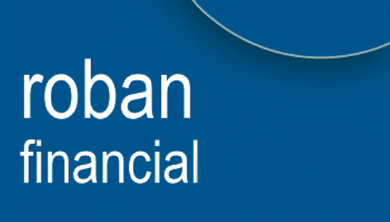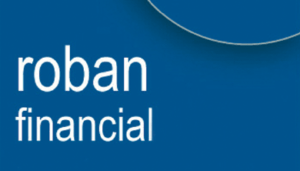Navigating the complexities of inheritance tax can be daunting. In Ireland, it’s essential to understand the ins and outs of inheritance tax planning to ensure that your loved ones receive the maximum value of your estate without being burdened by hefty tax bills.
The Basics of Inheritance Tax Planning
Inheritance tax planning revolves around organising and managing your assets in a manner that reduces the inheritance tax (often referred to as estate or death tax) that might be due upon your passing. Without a well-thought-out plan, your family might find themselves in a challenging position, potentially needing to borrow funds or sell assets to settle the tax bill.
The primary goal is to optimise the value of your estate that goes to your beneficiaries while keeping the tax implications to a minimum.
A Closer Look at Capital Acquisitions Tax (CAT)
In Ireland, the Capital Acquisitions Tax (CAT) is the official term for what many know as inheritance or gift tax. This tax applies to gifts and inheritances received by individuals.
Interestingly, the tax burden falls on the recipient of the gift or inheritance, not the person giving or the estate of the deceased. The only exemption is for spouses or civil partners inheriting from their deceased counterpart.
How is Inheritance Tax Calculated?
The calculation for CAT depends on the value of the received gift or inheritance and the relationship between the recipient and the giver or deceased. Ireland has set specific tax-free thresholds based on this relationship:
- Group A: Parent-child transfers have a tax-free threshold of €335,000.
- Group B: Transfers involving siblings, nieces, nephews, or grandchildren have a threshold of €32,500.
- Group C: All other relationships, like cousins or unrelated individuals, have a threshold of €16,250.
Gifts or inheritances exceeding these thresholds are taxed at 33%. It’s crucial to remember that CAT is self-assessed, meaning the beneficiary must calculate and pay any owed tax. Given the complexities, seeking advice from a Financial Advisor is recommended.
Example Scenario:
Imagine Mr. O’Brien passes away and leaves the following amounts to three different beneficiaries:
- To his daughter (Group A): €400,000
- To his nephew (Group B): €40,000
- To a close family friend (Group C): €20,000
Here’s how the inheritance tax would be calculated for each:
- For the daughter (Group A):
- Tax-free amount: €335,000
- Taxable amount: €400,000 – €335,000 = €65,000
- Tax due: 33% of €65,000 = €21,450
- For the nephew (Group B):
- Tax-free amount: €32,500
- Taxable amount: €40,000 – €32,500 = €7,500
- Tax due: 33% of €7,500 = €2,475
- For the family friend (Group C):
- Tax-free amount: €16,250
- Taxable amount: €20,000 – €16,250 = €3,750
- Tax due: 33% of €3,750 = €1,237.50
It’s crucial to remember that CAT is self-assessed, meaning the beneficiary must calculate and pay any owed tax. Given the complexities, seeking advice from a Financial Advisor is recommended.
Strategies to Minimise Inheritance Tax
Several strategies can help reduce the inheritance tax burden:
- Section 72 Insurance Policy: This unique Life Insurance policy is tailored to address inheritance tax. Beneficiaries receive a tax-free sum upon the policyholder’s death, intended to settle the tax bill. For eligibility:
- The policy owner must cover the premium.
- Only married couples or registered civil partners can opt for a joint-life plan.
- Premiums must be paid for a minimum of eight years.
- There’s also a Section 73 Savings Policy to help offset inheritance tax.
- Small Gift Exemption: Currently, a parent can gift their child €3,000 annually tax-free. If both parents gift, it totals €6,000 per year.
- Dwelling House Exemption: This allows one to inherit a home without incurring CAT, provided certain conditions are met, such as the house being the main residence of the deceased and the beneficiary living there for three years prior to the death.
FAQs on Section 73
Once I encash my policy, what happens next?
If you wish to use the proceeds of your policy for section 73 relief, you have one year to pay the gift tax liability. The gift should be made as soon as possible after the policy proceeds have been encashed. The proceeds of a section 73 Savings Plan policy will not qualify for relief on the payment of inheritance tax.
Can an existing savings policy become a section 73 policy?
No, you must take out a new policy. To qualify for section 73 relief, the policy must be specifically endorsed under section 73 of CATCA 2003 from the date of commencement.
What happens if I die before the minimum 8-year term?
If you die before the minimum 8-year term or before the gift tax liability is paid then the proceeds of the policy will form part of your estate
Assets Subject to Inheritance or Gift Tax in Ireland
Main assets that might be taxed include:
- Cash in bank accounts or investments.
- Property, including family homes (with some exemptions), holiday homes, or investment properties.
- Investments like stocks, bonds, and shares.
- Valuables such as art, jewellery, antiques, and collectibles.
- Business interests or ownership in companies.
- Life insurance policy proceeds, if they surpass specific thresholds.
In Conclusion
Inheritance tax planning is crucial to ensure your assets are passed on efficiently. By understanding the nuances of CAT and employing strategies like the Section 72 Insurance Policy, you can safeguard your family’s financial future.
Ready to navigate the intricacies of inheritance tax with confidence? Reach out to Roban Financial today and let our experts guide you every step of the way. Secure your family’s financial future now


